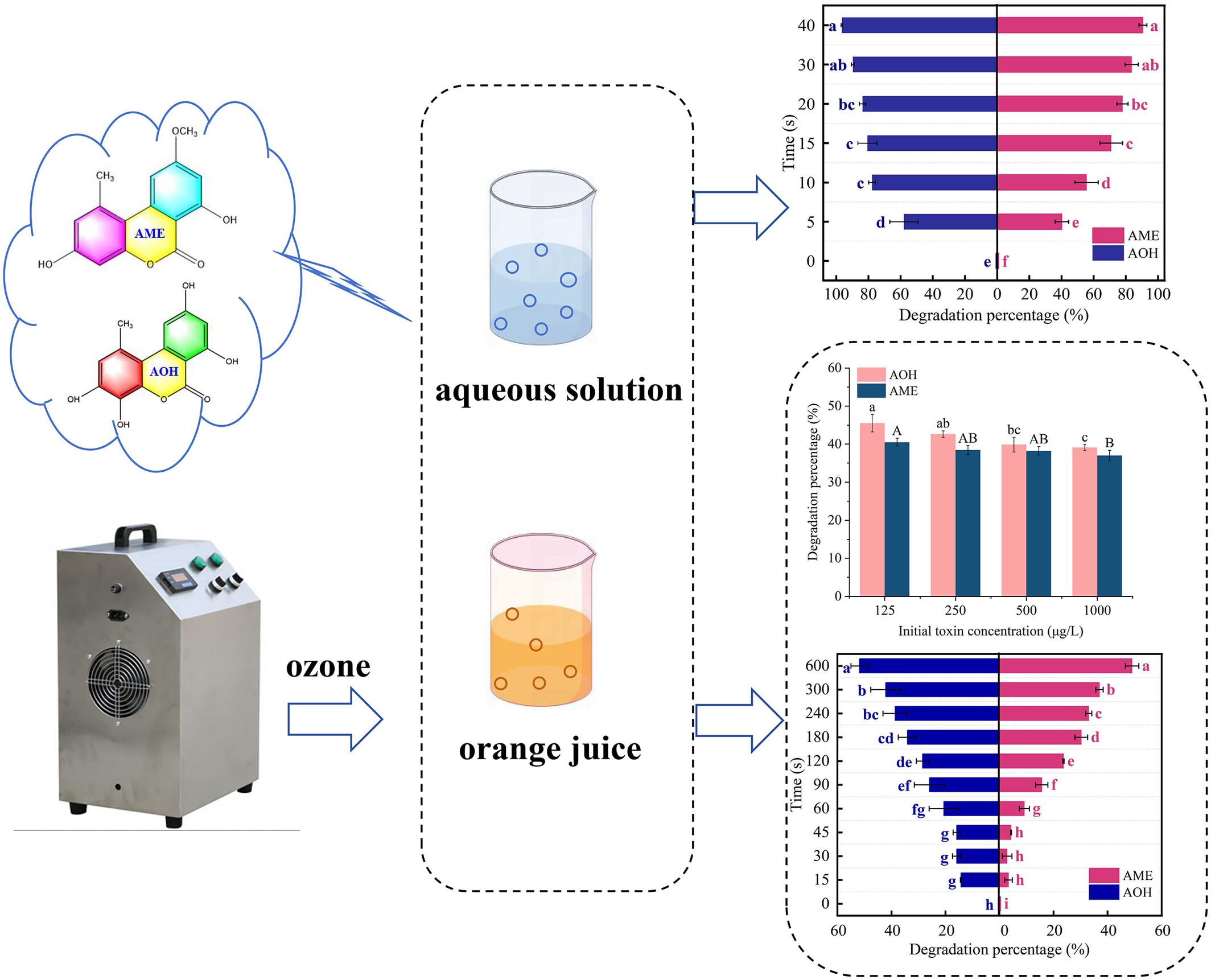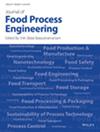Alternaria mycotoxin degradation and quality evaluation of orange juice by ozone treatment
Abstract
The effect of ozone treatment on the degradation of two Alternaria mycotoxins, alternariol (AOH) and alternariol monomethyl ether (AME), in both aqueous solution and orange juice was investigated. In addition, the quality of orange juice after ozone treatment was evaluated. The results demonstrated that ozone treatment effectively eliminated AOH and AME. In an aqueous solution, AOH exhibited a reduction of 57.95%, while AME decreased by 40.24% after 5 s treatment. And the two toxins could be almost completely degraded within 40 s. Moreover, an alkaline condition with a pH value of 10 facilitated complete degradation within just 15 s of treatment. Furthermore, higher temperatures may enhance the degradation percentage. Regarding orange juice, the degradation percentages of AOH and AME after ozone treatment for 600 s were recorded as 51.86% and 49.04%, respectively, which were comparatively lower than those observed in aqueous solution. The toxin degradation increased with longer treatment times and higher flow rates, but decreased with the initial concentration of mycotoxins. Meanwhile, the results of the quality evaluation showed that the color and browning index (BI) of orange juice did not change significantly, while the pH value was reduced. Additionally, the clarification, antioxidant properties, and stability of orange juice were significantly improved after ozone treatment. In conclusion, ozone treatment is an effective approach for degrading Alternaria mycotoxins while also improving certain quality parameters within a given treatment time frame. Therefore, it can be considered a promising non-thermal alternative technology for removing Alternaria mycotoxins from food systems.
Practical applications
The Alternaria fungus has the capacity to infect a wide range of crops, with infections occurring during various stages such as planting, transportation, and processing. Ozone technology has been extensively utilized in drinking water treatment, wheat flour treatment, wastewater treatment, aquaculture, and medical industries. However, current methods for controlling mycotoxins fail to meet industry demands for high removal rates, environmental friendliness, efficiency, and convenience as well as low-cost maintenance required to preserve the sensory quality and nutritional value of food products. Therefore, there is an urgent need to explore novel approaches that can effectively address these challenges in practical production settings. Furthermore, the parameter optimization of specific technologies within the food sector remains underdeveloped and requires further research. In this context, ozone technology holds promise for controlling Alternaria mycotoxins degradation in orange juice while offering valuable insights into toxin degradation within the beverage industry.


 求助内容:
求助内容: 应助结果提醒方式:
应助结果提醒方式:


